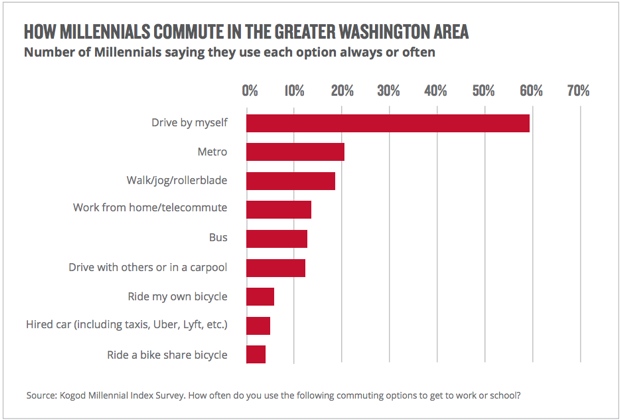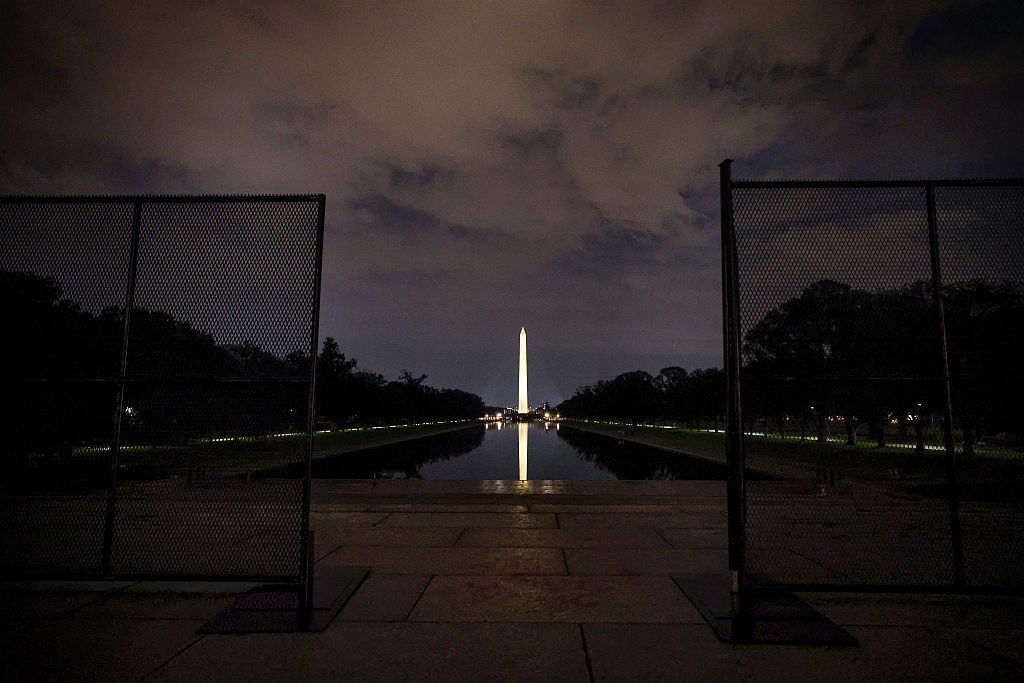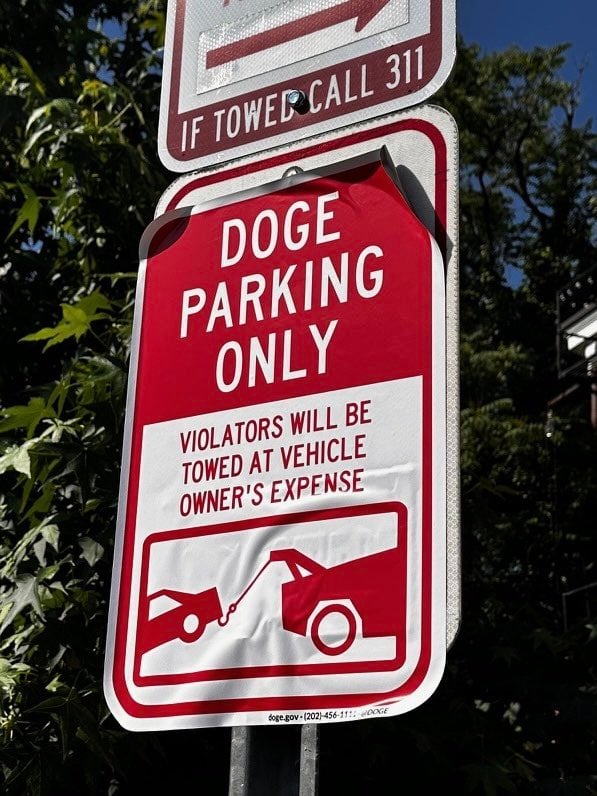As millennials drift into adulthood, their priorities are shifting away from artisanal food and flash-in-the-pan apps to, well, more adult concerns like career stability, home ownership, and family planning. That’s the gist of a study published Wednesday by American University’s Kogod School of Business, which surveyed 300 DC-area people between the ages of 20 and 34 about their longterm prospects and whether Washington is equipped to meet their needs.
Overall, millennials are very pleased with the Washington metropolitan area, reports the Kogod School, which gave the region a “millennial-friendly score” of 25 percent more attractive than the average US city. The region rates very highly for job opportunities, salaries, and innovative and attractive workplaces, but gets dinged on affordability and—no surprises here—its unenjoyable commuting experience. Getting to and from work in Washington only rates 69 percent as easy as the average city, the survey reports, a symptom it chalks up to a faltering Metro system and notoriously bad traffic.
The statistical upshot that’s getting the most attention is that about 60 percent of the people who responded to the Kogod School’s survey say they get to work by driving alone in their cars. In plainer terms, millennials—who are supposedly shunning cars for bike-sharing systems, ride-hailing apps, and exploding “hoverboards”—are just as car-dependent as everyone else.
“It’s contrary to what we all talk about when we discuss millennials,” Bob Sweeney, a Kogod School administrator who oversaw the survey, told Washington Business Journal. “What we found in the study overall was that millennials are just like their parents and their grandparents in a lot of ways.”
There’s some truth to what Sweeney is saying. As the oldest millennials, who were born in the early 1980s, start families, their lives’ concerns are less trend-obsessed and more focused on things like home affordability, crime levels, child care, and school quality. Only 9 percent of people in the AU study describe Washington as an affordable place to live. And as people who are starting to concern themselves with quality-of-life details, some of these homesteading millennials are settling down in the suburbs, where commutes are longer and more often done by automobile.
It’s not necessarily tethered to family dynamics, though. A 20-something IT consultant who lives in the District or Arlington but works at, say, an office park off the Dulles Toll Road, currently has almost no option for getting to his or her office other than driving.
But that does not mean nothing has changed over generations. While driving alone to work is the most popular commuting mode for millennials, Sweeney’s observation fails to recognize that as a group, Washington-area millennials are still driving to work far less than the overall population. Slightly more than 70 percent of the Kogod School survey’s subjects reported driving alone or carpooling to work. That’s a figure in line with a 2014 Census Bureau report on young adults, which found that 71.9 percent of Washington-area adults between 18 and 34 years old drove or carpooled to work as of 2013, a 7 percent drop from 18-to-34-year-olds who reported the same on the 2000 Census.
Already, Washington-area millennials are commuting by automobile less than the region as a whole, in which 75.7 percent of workers commuted by private vehicle, according to another Census report. And as woeful as Metro might be, the younger set—as analyzed by AU researchers—also relies on it far more than the general population, with more than 20 percent of millennials commuting by rail compared to a local overall rate of 8 percent.

The other thing to remember is that changes in commuting patterns are almost never as immediate as the policy wonks and early adopters who cheerlead for them. New transportation infrastructure and technologies are redrawing our mental maps of the region, but not overnight. Capital Bikeshare finished dead last when the Kogod School asked its millennial subjects how they get to work, just behind private vehicles for hire, which includes apps like Uber along with conventional taxis. And implementation is slow. Ridership on Metro’s Silver Line, which only extends to Reston right now, has been below transit officials’ expectations as the system’s service record has deteriorated, and it won’t extend to Dulles until at least late 2019. Bikeshare is growing, and will finally arrive in Fairfax County this fall, but a couple hundred bikes in communities where the number of safe bike routes is still relatively primitive are unlikely to make a statistically significant difference in how people get to work.
Still, if the big takeaway in a study of DC-area millennials is that commuting here can be nightmarish, the big number—that 60 percent who drive to work alone—isn’t actually cause for concern. Millennials might not all be the bike-sharing, Uber-dependent, hoverboarding snake people that marketing professionals and other mass psychologists make them out to be, but they’re still driving alone way less than the general population, and that looks like progress.



















